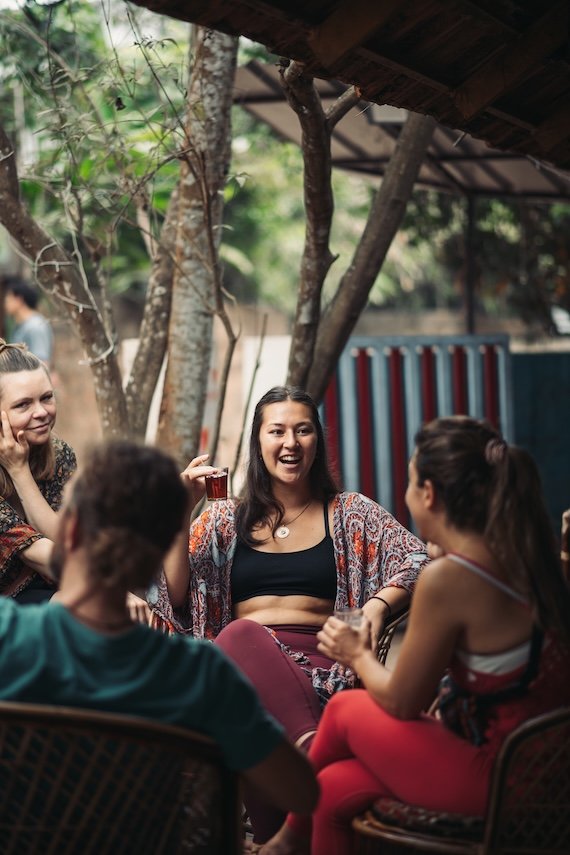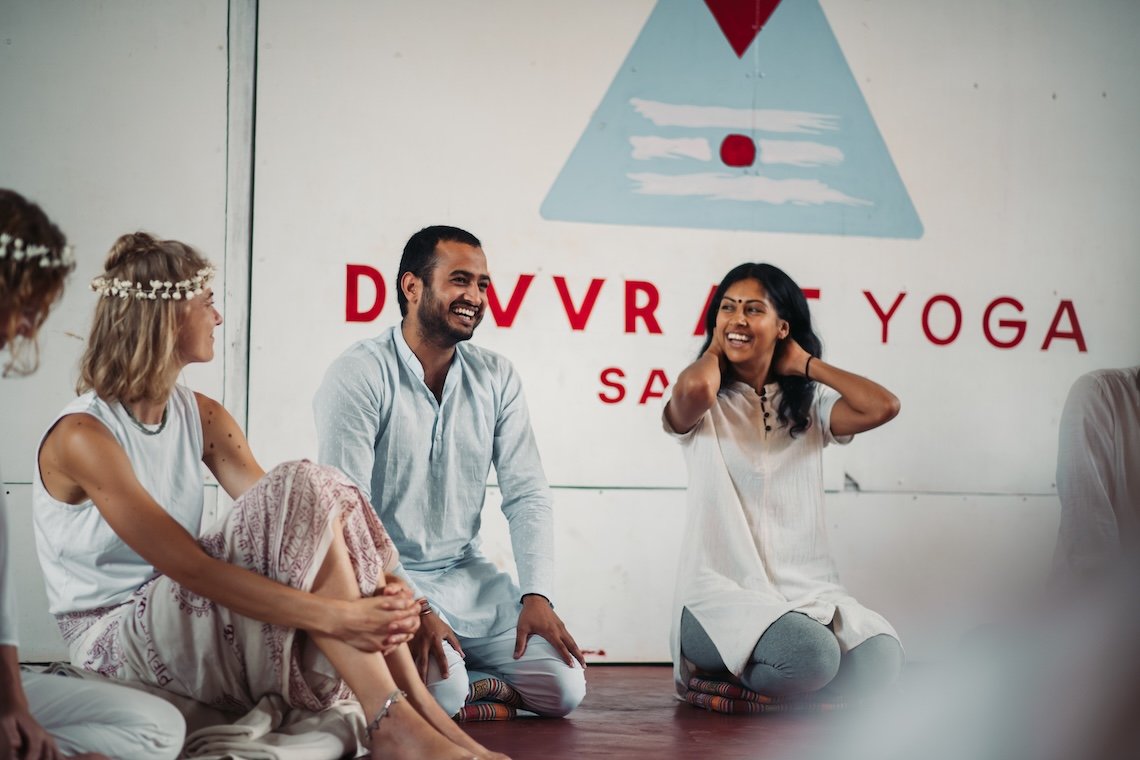Extended Triangle Pose | Utthita Trikonasana
From Sanskrit to English
Sanskrit pronunciation: Utthita Trikonasana (oo-TEE-tah trik-cone-AHS-anna)
Meaning: extended; tri = three; kona = angle → trikona = three angles, triangle
Benefits of Utthita Trikonasana
Yoga for every BODY
Depending on the school of yoga, the position of the torso and hand placement vary slightly in Utthita Trikonasana. The instructions given below are for a standard Utthita Trikonasana according to Ashtanga Vinyasa Yoga. The purpose of this pose is to open the body and activate its energy and vitality centres, thus if you feel that your body is closing you may want to go through the various modifications provided below!
Standard Utthita Trikonasana
1. To find your ideal stance: open your feet parallel to one another, align your heels, extend your arms out, and then adjust the distance between your feet so that your ankles are directly beneath your wrists. Release the arms.
2. Turn your right foot so that it’s parallel to the long edge of your mat. Make sure your left foot is parallel to the shorter edge of your mat. If you were to draw a line from your front heel to your back foot, it would fall right in the middle of the inner arch of your back foot. Press firmly through your feet to engage and extend your legs.
3. Activate your mula bandha and uddiyana bandha, lengthen through the sides of your waist and draw your lower belly in. Raise your arms parallel to the floor and reach your hands out to the sides, shoulders away from the ears, palms facing down.
4. Equally lengthening the sides of your body, shift your hips slightly towards the left and reach out towards the right, directly over the plane of your right leg. Then bend at the hip joint to bring your right arm down and lock your big toe with your peace fingers.
5. Rotate your ribs towards the sky and stretch your left arm up so that your left hand is in line with your shoulders, right arm and hand.
6. Lengthen through the sides of your neck, so that your neck is in line with your spine. If possible, turn your gaze towards your left hand.
Modification: Using a wall
The wall helps understand the expected alignment in the hips, back, and shoulders. Before bending at the hip joint and sending the front hand to the front foot,we want to equally lengthen the sides of the body, sway the hips away from the front leg, and reach towards the opposite sidewithout closing our hips or shoulders (see picture A). If extending the arms as expected in Utthita Trikonasana affects the alignment of your hips and shoulders, keep your front hand on your thigh (see picture B and C).
A

B

C

Modification: Supporting the upper body
Using a strap helps maintain a correct alignment of the shoulders and the spine, allowing a nice opening in the chest.
D

1. Stand on your mat in Tadasana. Place a strap under your shoulder blades, bring the strap ends evenly to the front, cross them to the front, over your shoulders, and cross them again behind you. Grab the strap ends with each hand.
Modification: Hand on hip and a block
Keeping your back arm on your hip while pressing the fingertips or flat palm of your front hand into the block not only prevents the shoulders and chest from closing, but also facilitates the rotation of the ribs towards the sky.
E

F

Modification: Using a strap
Looping a strap around your hip crease helps maintain a correct alignment of the hips to better perform the action of bending at the hip joint.
G

Modification: Supporting the arm
The purpose of using a chair is to make Utthita Trikonasana accessible for people who are almost there, yet risk closing their body or compressing their neck if they attempt to grab their big toe and look up towards the sky.
H

1. Place a chair with its seat facing you and a blanket on top of it for further height and support.
2. Follow the instructions for standard Utthita Trikonasana, but place your front hand on the chair seat, maintaining your opposite arm in line with your shoulders, and look forwards.
what we offer
Explore Our Top Yoga Programs in Kerala

200H Yoga Teacher Training in Kerala
View Program

300H Yoga Teacher Training in Kerala
View Program

Yoga & Ayurveda Retreats
Shorter immersive retreats in Kerala combining yoga, Ayurveda, and meditation. Reconnect with yourself while experiencing India’s holistic traditions.
View Program
